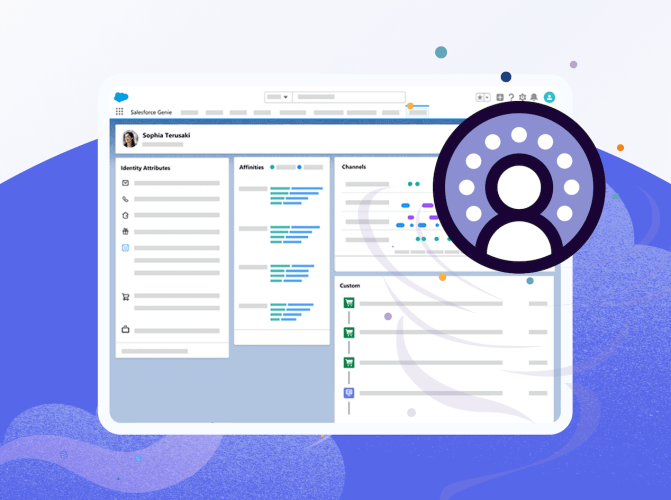Is Your Organization Ready for AI? 5 Data Leaders Share Real-World Tips



Keep your relevancy and keep your standards: The new "rules of AI" for business need both.

Wendy Batchelder
AI is having its moment. No longer just a buzzword, AI and generative AI are changing how we all do business. So what should a data leader be doing to succeed with AI in the enterprise?
We spoke to five members of the Data Leadership Collaborative to learn from their experience, and get a few tips for data leaders who are beginning to champion AI technologies in their own organizations. The panel, moderated by Hugh Kennedy, included:
- Chitrang Dave, senior director, enterprise data and analytics, Edwards Lifesciences
- Solomon Kahn, founder and CEO, Delivery Layer
- Kevin O’Callaghan, head of data analytics, Teamwork
- Aisha Quaintance, vice president strategic development, RelationalAI
- Deep Srivastav, SVP, head of AI and digital transformation, Franklin Templeton
Tip #1: Find the right use cases
Q. What are the critical actions you can take to help guide AI transformation in your organization?

Kevin O’Callaghan: The first thing we have on our minds is how do we differentiate ourselves further in the marketplace with our product, and how will AI assist us in doing that? And not just in terms of our product and how we can enhance it, but also across the enterprise in terms of the efficiencies in our operations, our organization, and our structure.

Chitrang Dave: One of the key roles that we, as data leaders, need to constantly be playing is one that of an evangelist and really understanding the technology. Obviously, you need to be able to be clear-eyed about the potential, but be able then to come down to the use cases. What are the jobs to be done? I believe we are at a point where we should be thinking about these jobs not as jobs that only humans can be doing.
Key takeaways: Understand the technology so you can apply it to the right use cases. Think beyond product, and consider how AI can be leveraged to improve your processes and organizational effectiveness.
Tip #2: Prioritize big-picture thinking
Q. How should data leaders be managing AI’s expanding role in the enterprise?

Deep Srivastav: My first focus as a data leader is to look at it from more of a tactical perspective. We can implement AI to help automate and achieve scale on business processes. And the other focus is more strategic. The organizational, culture change aspect. There are conversations that we need to be having with executives and senior executives to enlighten them on where there is opportunity and think beyond what we used to be able to do with just human intelligence.
The potential is immense. You don’t have to sell people on the potential. What you do have to sell people on is how to go about it. What is a short-term strategy? What is a long-term strategy? There’s excitement and I think – across the board – everybody wants to become more knowledgeable in this space.
Key takeaways: Strategy is the killer app that will bring your AI plans to life. Bring internal stakeholders into the conversation at the beginning to ensure strategy reflects the right short- and long-term priorities.
Tip #3: Governance needs to keep up with AI transformation
Q. Is AI going to change the way that governance and reporting structures work, or should it?

Solomon Kahn: The changes that are happening with AI are too big to only funnel through the data team, and are too profound to wait for other data infrastructure projects to be ready before you start more widespread implementation. The business units are going to move. It’s better to be part of the change than to try to be a silo outside of it and lose your relevance to the business.
Key takeaways: Business isn’t going to wait for the “rules of the game” to be established. Data leaders need to partner with leadership to create effective, scalable, AI governance frameworks for their organizations.
Tip #4: Plan for a changing workforce
Q. When it comes to AI, how should data leaders be thinking about workforce planning and all the change management and culture shifts that need to happen?
Solomon Kahn: I think most business leaders have a good sense of what are the key jobs that are being done inside their organization. Of those key jobs, where could AI transform it in some way? Some organizations are going to have a lot of those jobs because of the domain that they’re in and some aren’t going to have that many. I think it’s important for any executive — data leader or not — to understand where they are on that spectrum and then plan accordingly.
Key takeaways: When considering any AI initiative, take a holistic approach to workforce planning, including a deep dive into roles and responsibilities, to determine where AI will make the most impact.
Tip #5: At the end of the day, AI is a team sport
Q. How should data leaders answer questions about how much to invest in AI, when to expect results, and similar concerns?

Aisha Quaintance: One of the ideas that’s been helpful is to flip the question back to the person who’s asking: How are we going to do this? Let’s figure this out together. Have them help create the solution. We can lead the discussion on the data strategy, but we don’t have to own it alone. We don’t have to have all the answers.
Key takeaways: Data leaders and internal stakeholders play an equal role in building AI success. Embrace the challenge, and work as a team to find the right solutions.
Looking for more AI success tips?
Check out our AI Strategy Guide to help you plan effectively and answer questions about the benefits of AI.






























